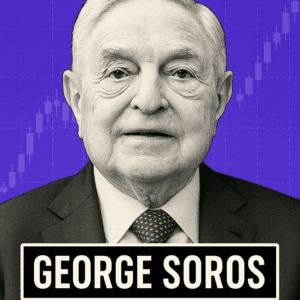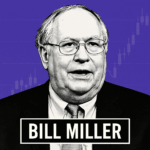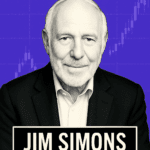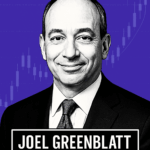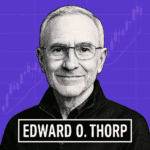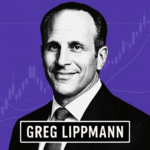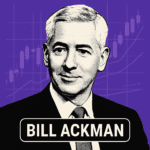George Soros, often called “The Man Who Broke the Bank of England,” is one of history’s most influential and controversial investors. Born in Hungary, Soros survived Nazi occupation before becoming a global financial powerhouse and philanthropist. His Quantum Fund famously earned $1 billion in a single day shorting the British pound in 1992, cementing his reputation as a master of global macro investing. Beyond markets, Soros has donated over $32 billion to promote democracy, human rights, and education worldwide through his Open Society Foundations.
Early Life and Education (1930–1956)
August 12, 1930
György Schwartz (later George Soros) is born in Budapest, Hungary, to a prosperous non-observant Jewish family. His father, Tivadar Schwartz, was a lawyer and World War I prisoner of war who escaped from Russia. As a child, Soros would later recall a comfortable middle-class upbringing in a culturally vibrant Budapest before the shadow of Nazism fell across Europe.
1944-1945
When Nazi Germany occupies Hungary, 14-year-old Soros and his family survive the Holocaust by securing false identity papers and separating to increase their chances of survival. His father, Tivadar, creates elaborate false identities and documents for many Jews beyond his own family. These formative experiences profoundly shape Soros’s worldview, instilling a deep understanding of how quickly societies can collapse and how regimes can manipulate reality. His father’s ingenuity in securing their survival gives young Soros an early lesson in the importance of anticipating political developments and adapting quickly to changing circumstances.
1947
As Soviet influence tightens over Hungary after World War II, 17-year-old Soros leaves his homeland for London. Without resources or connections, he works various jobs including waiter and railway porter while supporting himself through school. The experience of being a penniless immigrant gives him firsthand insight into economic hardship and outsider status—perspectives that would later influence both his investment strategies and philanthropic priorities.
1947-1952
Soros attends the London School of Economics (LSE), where he studies under renowned philosopher Karl Popper, whose ideas on “open society” and the dangers of totalitarianism profoundly influence Soros’s thinking. Popper’s concept that no ideology or philosophy possesses the ultimate truth becomes central to Soros’s later development of his theory of reflexivity. Despite financial struggles, Soros excels academically and graduates with a Bachelor of Science in Philosophy in 1951 and a Master of Science in Philosophy in 1952.
1952-1956
After graduation, Soros struggles to find satisfying work in post-war Britain’s recovering economy. He works several jobs, including selling fancy goods and souvenir items. During this period, he writes letters to merchant banks across London seeking employment, facing numerous rejections before finally securing a position as an entry-level clerk at Singer & Friedlander, a merchant bank in London. This position provides his first exposure to international finance and trading, planting the seeds for his future career.
Wall Street Beginnings (1956-1970)
1956
Soros emigrates to the United States, joining F.M. Mayer, a New York brokerage firm, as an arbitrage trader specializing in European securities. This role leverages his European background and language skills, giving him insight into post-war European recovery investments that many American traders lacked. During this period, he begins developing his distinctive approach to market analysis that combines economic fundamentals with psychological and political factors.
1959-1963
Soros moves to Wertheim & Co. as an analyst focusing on European securities. His expertise in European markets proves valuable as post-war reconstruction creates investment opportunities across the continent. Working at Wertheim, Soros refines his investment philosophy, gradually developing what would later become his theory of reflexivity—the idea that market participants’ perceptions affect market fundamentals in a feedback loop, creating booms and busts.
1963-1969
Soros joins Arnhold and S. Bleichroeder, where he becomes vice president. At this firm, he gains exposure to institutional investment management and broader global macro considerations. During this period, Soros manages the firm’s first offshore investment fund, First Eagle, gaining valuable experience running a fund. By the late 1960s, he establishes the Double Eagle hedge fund for the firm with $4 million in capital. Increasingly confident in his investment approach and eager for greater autonomy, Soros begins planning his own investment vehicle.
The Quantum Fund Era (1970-2000)
1970
Soros founds Soros Fund Management with $12 million, including $250,000 of his own capital. He renames his Double Eagle fund as the Soros Fund. This marks the beginning of his independent investment career, allowing him to fully implement his investment philosophy without institutional constraints. His timing coincides with significant changes in the global financial system, including the breakdown of the Bretton Woods fixed exchange rate system, creating new opportunities in currency markets.
1973
Due to regulatory changes, Soros leaves Arnhold and S. Bleichroeder to focus entirely on Soros Fund Management. The fund is renamed the Quantum Fund (named after Werner Heisenberg’s quantum theory, reflecting Soros’s philosophical interest in uncertainty principles). The fund gains 42.6% this year. Soros partners with Jim Rogers, who becomes his key collaborator for the next decade. Their partnership combines Soros’s macro theorizing with Rogers’s more detail-oriented research approach, creating a formidable investment team.
1973-1980
The Quantum Fund achieves remarkable growth during a difficult economic decade marked by oil shocks, stagflation, and currency volatility. While most investors struggle with these conditions, Soros’s willingness to short stocks and currencies and make large macro bets allows the fund to thrive. During this period, Quantum averages annual returns above 30%, establishing Soros’s reputation as a premier global macro investor. By 1980, Quantum has grown from $12 million to over $400 million in assets under management, and early investors see their capital multiply over 30 times.
1981
Soros publishes “The Alchemy of Finance,” articulating his theory of reflexivity. This book presents his distinctive investment philosophy, arguing that markets are inherently biased and that investor perceptions influence fundamentals in a feedback loop. Though initially receiving limited attention from mainstream economists, the book later gains recognition as offering crucial insights into market behavior, particularly after Soros’s spectacular currency trading successes validate his approach. The book solidifies his status as not merely a successful trader but also a significant financial theorist.
1985
After a challenging period in markets, Soros takes a temporary step back from day-to-day management of the Quantum Fund, appointing others to manage while he focuses on larger strategic decisions. This period marks a personal and professional transition as he begins to devote more energy to philanthropy, establishing foundations to promote open societies in Eastern Europe and the Soviet Union, anticipating the political changes that would soon unfold there.
1992
In what becomes known as “Black Wednesday” (September 16, 1992), Soros executes his most famous trade, shorting the British pound after concluding that Britain’s position in the European Exchange Rate Mechanism (ERM) was unsustainable. When Britain is forced to withdraw the pound from the ERM and devalue the currency, Quantum Fund makes approximately $1 billion in profit in a single day. This spectacular trade earns Soros the title “The Man Who Broke the Bank of England” and cements his status as a financial legend. The trade also demonstrates his theory of reflexivity in action, as market pressure forced a policy change that validated his initial market position.
1997
During the Asian Financial Crisis, Soros takes significant positions against the Thai baht and Malaysian ringgit, correctly anticipating currency devaluations. These trades are highly profitable, but they provoke political backlash. Malaysian Prime Minister Mahathir Mohamad specifically blames Soros for the currency’s collapse, calling him a “rogue speculator” and sparking ongoing controversies about the role of hedge funds in currency crises. For Soros, the episode further complicates his dual roles as speculator and philanthropist concerned with economic development.
1998-2000
During the Russian financial crisis and the dot-com bubble, Quantum Fund experiences significant volatility. In 2000, after losses and a strategic reassessment, Soros announces a major restructuring of his fund, adopting a less aggressive investment approach. He brings in new investment managers and reduces the fund’s risk profile. This marks the end of the high-volatility, high-return era of Quantum Fund, though Soros Fund Management continues to operate successfully with a more diversified approach. By this point, Soros’s personal wealth exceeds $10 billion, and he increasingly focuses on his philanthropic and political activities.
Philanthropy and Political Activism (1979-Present)
1979
Soros establishes his first foundation, the Open Society Fund, to support dissidents and human rights activists in communist Eastern Europe. This marks the beginning of his large-scale philanthropy, applying Karl Popper’s concept of “open society” to promote democracy, human rights, and civil liberties. His early funding provides scholarships for Black South African students during apartheid and supports Eastern European dissidents with photocopiers and other means to distribute independent information behind the Iron Curtain.
1984
Soros establishes his first major country-focused foundation in Hungary, providing funding for democratic initiatives, independent civil society, and educational exchange programs. Operating in his homeland while it was still under communist rule, the foundation creates space for alternative political discourse and supports democratization efforts. This becomes a model for his later foundations across Eastern Europe and the former Soviet Union, establishing Soros as a significant non-state actor in post-communist transitions.
1991-1995
Following the collapse of the Soviet Union, Soros rapidly expands his philanthropic network, establishing foundations across Eastern Europe and the former Soviet republics. His foundations support diverse initiatives from reforming educational systems to funding independent media, public health programs, and economic reforms. During this period, his annual philanthropic spending exceeds $300 million, making him one of the largest private donors in the region. In Russia, the Soros Foundation becomes particularly influential, supporting scientists, educational reform, and internet infrastructure.
1993
Soros establishes the Open Society Institute (later renamed Open Society Foundations) as an umbrella organization to coordinate his growing network of foundations. The organization promotes democratic governance, human rights, and reform across regions including Eastern Europe, Africa, Latin America, and Asia. By centralizing strategic direction while maintaining local foundation autonomy, Soros creates one of the world’s most extensive philanthropic networks focused on political and social change.
1997-2000
Soros expands his philanthropic focus to address global challenges beyond post-communist transitions, including public health initiatives, higher education reform, media development, and combating corruption. The Open Society Institute launches major initiatives to reduce discrimination against Roma populations in Europe and to promote transparency in extractive industries. By 2000, Soros’s philanthropy operates in more than 50 countries with annual giving exceeding $500 million.
2002-2004
Soros emerges as a vocal critic of the Bush administration, particularly opposing the Iraq War. He publishes several books outlining his concerns about American foreign policy, including “George Soros on Globalization” (2002) and “The Bubble of American Supremacy” (2004). During the 2004 U.S. presidential election, he donates over $25 million to organizations aimed at defeating President George W. Bush, marking his first major involvement in American partisan politics. This political activism generates significant controversy and establishes Soros as a polarizing figure in American political discourse.
2009-2011
In the wake of the global financial crisis, Soros funds a new economic think tank, the Institute for New Economic Thinking (INET), with an initial commitment of $50 million. The institute aims to challenge orthodox economic theories that Soros believes contributed to the financial crisis. During this period, he also pledges $100 million to Human Rights Watch and increases support for democratic institutions in emerging economies. These initiatives reflect Soros’s evolving philanthropic strategy, combining targeted interventions with efforts to reshape intellectual frameworks and global institutions.
2017
Soros transfers approximately $18 billion to the Open Society Foundations, one of the largest transfers of wealth from an individual to a foundation in history. This endowment secures the long-term future of his philanthropic work beyond his lifetime. The scale of this commitment makes the Open Society Foundations the third-largest philanthropic organization in the world, after the Bill & Melinda Gates Foundation and the Wellcome Trust.
2018-Present
In his late 80s and early 90s, Soros gradually transfers operational control of his business and philanthropic enterprises to his son Alexander Soros and other designated successors, ensuring continuity of his legacy. However, he remains active in public discourse, writing op-eds and giving interviews on threats to democracy, economic inequality, and climate change. In 2023, he announced Alexander Soros would take over as chair of the Open Society Foundations. Despite his advanced age, George Soros continues to wield significant influence through his philanthropic network and public advocacy, particularly on issues related to democratic institutions and European integration.
Think and Invest Like George Soros: Key Principles
1. The Theory of Reflexivity
“Market prices are always wrong in the sense that they present a biased view of the future.” – George Soros
The cornerstone of Soros’s investment philosophy is his theory of reflexivity—the idea that markets operate in a two-way feedback mechanism where participants’ biased perceptions affect fundamentals, which in turn affect perceptions. This creates self-reinforcing cycles that drive markets away from equilibrium, producing booms and busts. Unlike efficient market theorists, Soros believes markets are inherently biased and that recognizing these biases creates investment opportunities.
2. Fallibility and Radical Uncertainty
“The fact that we can make mistakes in our decisions has profound implications for the behavior of financial markets.” – George Soros
Soros emphasizes human fallibility—we make decisions based on imperfect understanding. Rather than seeing this as a limitation, Soros views it as fundamental to market dynamics and a source of opportunity. By recognizing that all market participants (including himself) operate with imperfect knowledge, he maintains flexibility and constantly reassesses his positions.
3. Identifying Market Bubbles
“Every bubble consists of a trend that can be observed in reality and a misconception relating to that trend.” – George Soros
Soros excels at identifying financial bubbles by recognizing both legitimate trends and the misconceptions amplifying them. He looks for scenarios where reflexive processes create self-reinforcing cycles, pushing prices far from equilibrium. While many investors either always fight trends or always follow them, Soros rides bubbles on their way up and then positions against them when he identifies their terminal phase.
4. Finding the Market’s Prevailing Bias
“Once we realize that imperfect understanding is the human condition, there’s no shame in being wrong, only in failing to correct our mistakes.” – George Soros
Instead of assuming markets are efficient, Soros seeks to identify their prevailing bias—how the market’s current narrative diverges from reality. He then assesses whether this bias is in its early stage (where it will amplify) or its late stage (where it will collapse). This approach requires constant critical thinking and willingness to change positions when evidence suggests the prevailing bias is shifting.
5. The Pain Threshold and Bet Sizing
“It’s not whether you’re right or wrong that’s important, but how much money you make when you’re right and how much you lose when you’re wrong.” – George Soros
Soros is known for his aggressive position sizing when conviction is high, sometimes risking 30% or more of his portfolio on a single trade. However, he couples this aggression with strict risk management, relying on physical pain signals (famously, his “backache” when positions move against him) to identify when to cut losses. This combination allows for optimal capital allocation—maximizing exposure to high-conviction ideas while preventing catastrophic losses.
6. Recognizing Fertile Ground for Speculation
“The worse a situation becomes, the less it takes to turn it around, and the bigger the upside.” – George Soros
Soros identifies situations where small changes can trigger disproportionate market reactions, often focusing on inherently unstable political or economic arrangements (like fixed exchange rate mechanisms under pressure). By understanding these “unstable equilibria,” he positions himself to profit from inevitable adjustments when policies cannot be sustained against market forces.
7. Dynamic Position Management
“I’m only rich because I know when I’m wrong. I basically have survived by recognizing my mistakes.” – George Soros
Unlike investors who establish positions and hold them, Soros actively manages positions in response to new information and market behavior. He adds to winning positions when they confirm his thesis and rapidly reduces exposure when evidence contradicts his view. This dynamic approach treats position sizing as a continuous process rather than a one-time decision.
8. Integrating Politics and Economics
“Markets don’t just reflect reality, they create it. But the created reality isn’t like a photo, it’s more like a caricature.” – George Soros
Unlike purely technical traders or fundamental analysts, Soros integrates political developments into his market analysis. His best trades often anticipated how political constraints would eventually yield to economic realities (as with the British pound in 1992). This approach requires deep understanding of both political dynamics and market mechanisms, recognizing how they influence each other.
9. Psychological Resilience
“The financial markets generally are unpredictable. So that one has to have different scenarios… The idea that you can actually predict what’s going to happen contradicts my way of looking at the market.” – George Soros
Soros maintains exceptional psychological resilience, handling losses and volatility without emotional disruption. Having lived through the Nazi occupation of Hungary and arrived penniless in London, he developed perspective that helps him maintain composure during market turmoil. This resilience allows him to implement contrarian strategies that others might abandon under pressure.
10. The Scientific Method in Investing
“The prevailing wisdom is that markets are always right. I take the opposite position. I assume that markets are always wrong.” – George Soros
Soros applies a scientific approach to markets, treating investment theses as hypotheses to be tested rather than truths to be defended. He constantly seeks evidence that might invalidate his positions, maintaining what he calls “critical thinking at the margin”—assessing whether each new piece of information supports or contradicts his thesis. This intellectual flexibility has allowed him to escape major market dislocations that trapped more dogmatic investors.
How Soros Compares to Other Investing Legends
- Soros vs. Buffett: While Buffett focuses on identifying undervalued companies with strong fundamentals for long-term holding, Soros trades based on macroeconomic trends and market psychology, often holding positions for shorter periods. Buffett avoids economic forecasting; Soros embraces it as central to his approach.
- Soros vs. Simons: Unlike Jim Simons’ pure quantitative approach using mathematical models and algorithms, Soros relies on a combination of theory, instinct, and fundamental analysis. Simons seeks patterns in massive datasets; Soros seeks discrepancies between market narratives and economic realities.
- Soros vs. Druckenmiller: Stanley Druckenmiller, Soros’s former portfolio manager, shares his macro approach but typically maintains lower leverage and greater diversification. Both excel at identifying regime changes in markets, but Soros has historically taken larger, more concentrated positions when conviction is high.
Final Thoughts: Philosophical Investing & The Reflexive Markets
To think and invest like George Soros, market participants must embrace:
- A deep understanding that markets are inherently biased, not efficient.
- The courage to take contrarian positions when conviction is high.
- Intellectual flexibility to change views when evidence contradicts your thesis.
- Integration of political, economic, and psychological factors in market analysis.
- Careful attention to the dynamics between market perception and fundamental reality.
George Soros’s career demonstrates that successful investing requires not just technical skill but philosophical depth. His approach shows that markets, far from being perfect discounting mechanisms, are driven by human psychology, institutional constraints, and reflexive feedback loops that create persistent inefficiencies and periodic crises.
Think reflexively, act decisively, and let the principles of George Soros guide your approach to navigating the inherent uncertainties of financial markets.
